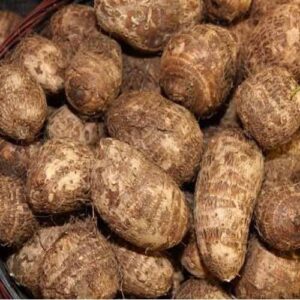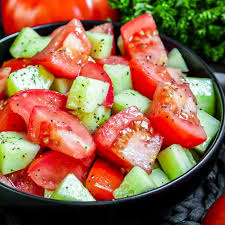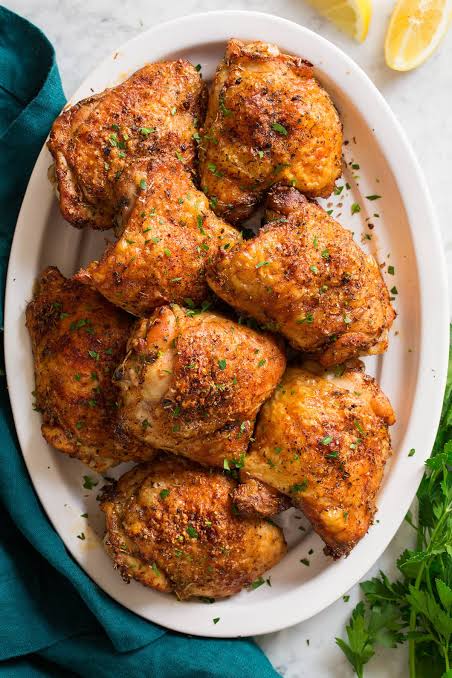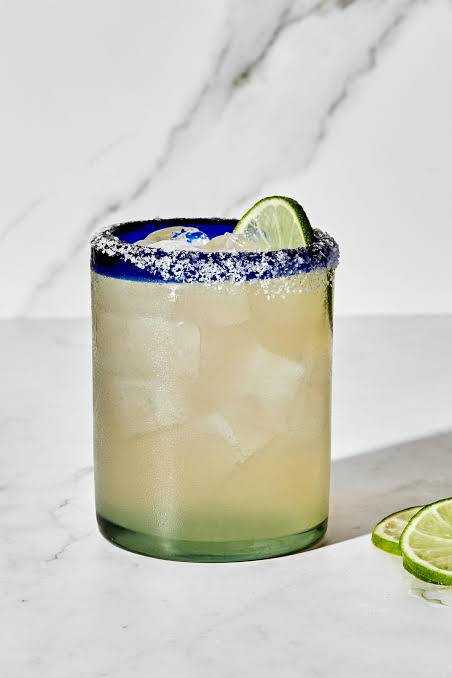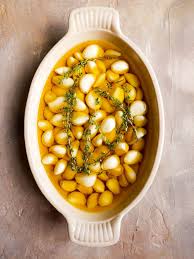
Preserving Garlic in Olive Oil”
- Introduction
- Overview of garlic’s culinary and health benefits.
- Importance of preservation for long-term use.
- Introduction to preserving garlic in olive oil, including benefits.
- Understanding Garlic: A Brief Background
- Historical significance of garlic.
- Nutritional content and health benefits.
- Culinary uses across different cuisines.
- The Science Behind Garlic Preservation
- Understanding garlic’s natural preservation qualities.
- Role of olive oil in preserving garlic.
- The process of oxidation and its effects on garlic.
- The importance of preventing botulism in garlic preservation.
- The Risks of Preserving Garlic in Olive Oil
- Introduction to botulism and its dangers.
- Factors that contribute to the risk of botulism in preserved garlic.
- Safety measures to reduce botulism risk.
- Step-by-Step Guide to Safely Preserve Garlic in Olive Oil
- Choosing the Right Ingredients
- Selecting fresh, high-quality garlic.
- Choosing the best olive oil for preservation.
- Optional: Adding herbs and spices for flavor.
- Preparation
- Cleaning and peeling garlic cloves.
- Optional: Blanching garlic for added safety.
- Sterilizing jars and equipment.
- Preservation Techniques
- Method 1: Raw Garlic in Olive Oil
- Simple preservation without cooking.
- Safety considerations and storage tips.
- Method 2: Cooked Garlic in Olive Oil
- Roasting or sautéing garlic before preservation.
- Differences in flavor and texture.
- Method 3: Fermented Garlic in Olive Oil
- The fermentation process explained.
- Combining fermentation with oil preservation.
- Method 1: Raw Garlic in Olive Oil
- Storage
- Proper storage conditions: temperature, light, and container type.
- Shelf life and signs of spoilage.
- Choosing the Right Ingredients
- Alternative Preservation Methods
- Freezing garlic for long-term storage.
- Dehydrating garlic and making garlic powder.
- Pickling garlic.
- Garlic confit.
- Culinary Uses for Preserved Garlic in Olive Oil
- Enhancing dishes with garlic-infused olive oil.
- Recipes that use preserved garlic.
- Tips for incorporating preserved garlic into everyday cooking.
- Common Mistakes and Troubleshooting
- Identifying and avoiding common mistakes in garlic preservation.
- Troubleshooting issues such as spoilage or off-flavors.
- Health Considerations
- The impact of preserved garlic on nutritional value.
- Understanding the health benefits of garlic-infused olive oil.
- Addressing concerns about fat content.
- Conclusion
- Recap of the benefits and methods of preserving garlic in olive oil.
- Encouragement to experiment with flavors and methods.
- Final thoughts on safety and best practices.
1. Introduction

Garlic, often referred to as the “stinking rose,” is a culinary staple and medicinal powerhouse. Its robust flavor and health benefits have made it a cherished ingredient across cultures and cuisines. However, garlic has a relatively short shelf life in its raw form, prompting the need for effective preservation methods. One of the most popular and flavorful ways to preserve garlic is by immersing it in olive oil. This method not only extends the life of garlic but also infuses the oil with a rich, garlicky aroma, making it a versatile addition to any kitchen.
In this article, we’ll explore the intricate process of preserving garlic in olive oil, from selecting the best ingredients to ensuring safety against harmful bacteria. Whether you’re a seasoned cook or a home-preservation enthusiast, this guide will equip you with everything you need to know to successfully preserve garlic in olive oil.
Read this also:- Best fluffy pancakes recipe Pea and ham soup recipe
2. Understanding Garlic: A Brief Background
Garlic (Allium sativum) has been cultivated for over 5,000 years, revered not only for its culinary applications but also for its medicinal properties. Ancient civilizations, including the Egyptians, Greeks, and Romans, valued garlic as a remedy for various ailments, from infections to digestive disorders.
Nutritionally, garlic is rich in vitamins C and B6, manganese, and selenium. It also contains compounds like allicin, whhttps://dreamfoodcake.com/pancake-fluffy-pancakes-how-to-make-amazing-pancakes/ich contribute to its characteristic pungent smell and numerous health benefits, including anti-inflammatory, antioxidant, and immune-boosting properties.
Garlic’s versatility in the kitchen is unmatched. It can be used raw in dressings and salsas, sautéed as the base for soups and sauces, or roasted to mellow its flavor. However, fresh garlic has a limited shelf life, typically lasting only a few weeks before sprouting or decaying. This necessitates methods of preservation, with olive oil being a popular choice due to its ability to both preserve and enhance garlic’s flavor.
3. The Science Behind Garlic Preservation

Preserving garlic in olive oil is more than just submerging cloves in oil. Understanding the underlying science is crucial for both flavor and safety. Garlic has natural antimicrobial properties, but when submerged in oil, an anaerobic (oxygen-free) environment is created. While this prevents oxidation, it can also create conditions favorable for the growth of Clostridium botulinum, the bacteria responsible for botulism—a potentially fatal illness.
The role of olive oil in preservation is twofold: it acts as a barrier against air, slowing down oxidation, and it absorbs and carries the garlic’s flavors. However, the absence of air in oil-based preservation methods can encourage the growth of botulinum bacteria if the garlic isn’t handled correctly.
Preventing botulism involves understanding the factors that contribute to its growth: low acidity, moisture, and an anaerobic environment. Ensuring that garlic is properly prepared, stored at the right temperature, and consumed within a safe timeframe are all critical to safe preservation.
4. The Risks of Preserving Garlic in Olive Oil
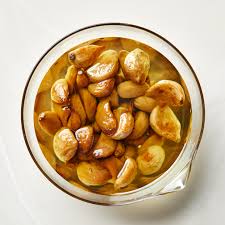
Botulism is the primary concern when preserving garlic in olive oil. Unlike many bacteria, Clostridium botulinum can thrive in environments that are low in oxygen, such as a jar of garlic submerged in oil. The spores of this bacterium are found in soil, and since garlic grows underground, it can carry these spores.
When garlic is preserved in olive oil without proper precautions, botulinum spores can germinate and produce toxins, leading to foodborne botulism. Symptoms of botulism include nausea, vomiting, muscle paralysis, and in severe cases, death. Given the severity of botulism, it is essential to understand and mitigate the risks involved in preserving garlic in olive oil.
One way to reduce the risk is by adding acid (such as vinegar or lemon juice) to the garlic before adding it to the oil, which increases the acidity and creates an environment less conducive to botulinum growth. Another important measure is to refrigerate the preserved garlic and use it within a week or two.
5. Step-by-Step Guide to Safely Preserve Garlic in Olive Oil
Choosing the Right Ingredients
- Selecting Fresh Garlic: Start with fresh, firm garlic bulbs. Avoid any cloves that are soft, sprouting, or discolored, as these can indicate spoilage or aging, which may increase the risk of bacterial contamination.
- Choosing Olive Oil: Extra virgin olive oil is preferred for its superior flavor and quality. However, any high-quality olive oil will work. The oil should complement the garlic without overpowering it.
- Optional Ingredients: Herbs like rosemary, thyme, or basil can be added for additional flavor, but it’s important to consider that these also introduce potential bacteria, so proper sterilization and storage are crucial.
Preparation
- Cleaning and Peeling Garlic: Carefully peel the garlic cloves, removing any bruised or damaged parts. For added safety, you can blanch the garlic briefly in boiling water to kill surface bacteria.
- Sterilizing Equipment: Sterilize jars, lids, and utensils by boiling them in water for at least 10 minutes or using a dishwasher’s sterilization setting.
Preservation Techniques
Method 1: Raw Garlic in Olive Oil

- Process: Place peeled garlic cloves in a sterilized jar and cover with olive oil, ensuring the cloves are completely submerged. Seal the jar tightly and refrigerate immediately.
- Safety Tips: Use within 2 weeks and store at 35-40°F (1.6-4.4°C). Check regularly for signs of spoilage, such as bubbles or off-odors.
Method 2: Cooked Garlic in Olive Oil
- Process: Lightly roast or sauté garlic cloves until they are golden but not browned. Cool completely before placing in a sterilized jar and covering with olive oil. Store in the refrigerator.
- Flavor Profile: Cooking enhances the sweetness of garlic and reduces its pungency, resulting in a milder, sweeter preserved garlic.
Method 3: Fermented Garlic in Olive Oil
- Process: Ferment garlic in a salt brine for several weeks until it develops a tangy flavor. Drain and place in a jar, covering with olive oil. This method combines the benefits of fermentation with oil preservation.
- Safety Tips: Ensure proper fermentation to avoid spoilage. Fermented garlic should have a sour smell, not a foul one.
Storage
- Temperature: Always store preserved garlic in the refrigerator at temperatures below 40°F (4°C).
- Container: Use airtight, sterilized glass jars to prevent contamination.
- Shelf Life: Garlic preserved in olive oil should be used within 2 weeks to reduce the risk of botulism. For longer storage, freeze the garlic in oil.
6. Alternative Preservation Methods
- Freezing Garlic: Peel and chop garlic, then freeze in small portions. Freezing preserves garlic for months without the risk of botulism.
- Dehydrating Garlic: Dry garlic slices or cloves and store them in airtight containers. Dehydrated garlic can be ground into powder or used in cooking.
- Pickling Garlic: Garlic can be pickled in vinegar, which increases acidity and preserves it safely for months.
- Garlic Confit: Slow-cook garlic in oil until tender, then store in the refrigerator. This method creates a rich, spreadable garlic but should be consumed within a week.
7. Culinary Uses for Preserved Garlic in Olive Oil
- Garlic-Infused Olive Oil: Use the flavored oil in dressings, marinades, or for drizzling over vegetables and meats.
- Spreadable Garlic: The softened garlic cloves can be spread on bread or added to sauces and soups for a deep, rich flavor.
- Recipe Ideas: Include recipes that highlight the use of preserved garlic, such as garlic aioli, roasted garlic mashed potatoes, and garlic pasta.
8. Common Mistakes and Troubleshooting
- Overlooking Sterilization: Inadequately sterilized jars or equipment can introduce bacteria, leading to spoilage.
- Improper Storage: Storing garlic in olive oil at room temperature can increase the risk of botulism. Always refrigerate.
- Ignoring Shelf Life: Using preserved garlic past its recommended storage time can be dangerous. Always adhere to safety guidelines.
- Signs of Spoilage: Identify and understand signs like cloudiness, bubbles, or unusual smells, which indicate spoilage.
9. Health Considerations
- Nutritional Impact: Preserved garlic retains much of its nutritional value, but some loss of vitamins can occur. However, the health benefits of garlic-infused olive oil, such as its anti-inflammatory properties, remain intact.
- Fat Content: While olive oil is a healthy fat, moderation is key, especially if using the infused oil frequently.
- Addressing Health Concerns: For those concerned about fat intake, alternatives like dehydrated garlic or garlic powder can be used in place of oil-preserved garlic.
10. Conclusion
Preserving garlic in olive oil is a rewarding process that enhances the flavor and extends the usability of garlic in your kitchen. By following proper safety protocols and understanding the risks involved, you can enjoy the benefits of garlic-infused olive oil without worry. Whether you use it to add depth to your favorite dishes or as a simple spread, preserved garlic in olive oil is a versatile and valuable addition to your culinary repertoire.
-
chicken thigh| chicken thigh recipes | tasty and delicious
About Chicken thigh :- Chicken thighs refer to the upper part of a chicken’s leg, located between the drumstick and the body. They are known for being dark meat, which means they have a higher fat content than chicken breasts, making them juicier and more flavorful. key characteristics:- 1. Dark Meat 2. Higher Fat Content
-
Old fashioned| mocktail| old fashioned mocktail recipe
About Old fashioned:- The Old Fashioned is a classic cocktail that dates back to the early 19th century and is known for its simplicity and strong flavor profile. It’s typically made with whiskey, sugar, bitters, and a citrus peel, often served over a large ice cube in a lowball glass. Why we love old fashioned
-
Margarita recipe | how to make | margarita mocktail | amazing cocktail
About margarita:- A margarita is a popular cocktail that originated in Mexico, known for its refreshing and tangy flavor profile. It is typically made with tequila, lime juice, and an orange liqueur like Cointreau or Triple Sec, and is often served in a glass with a salted rim. Margaritas can be enjoyed on the rocks
-
Mac and cheese recipe | baked mac and cheese recipe| best mac and cheese recipe|
About mac and cheese :- Mac and Cheese, short for macaroni and cheese, is a classic comfort food beloved by many across the world. This dish typically consists of cooked elbow macaroni pasta combined with a creamy cheese sauce. While simple in its basic form, mac and cheese has endless variations, from stovetop versions to
-
Ground beef| ground beef recipes | how to make | tasty and juicy
About ground beef:- Ground beef is beef that has been finely chopped or minced, making it versatile and suitable for various recipes. It’s commonly used in dishes like burgers, meatballs, tacos, and spaghetti sauce. Here’s a detailed look at ground beef: why we love ground beef:- Ground beef is a popular ingredient for several reasons,
